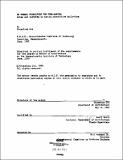| dc.contributor.advisor | Barry Zevin. | en_US |
| dc.contributor.author | Lin, Chuenfung | en_US |
| dc.contributor.other | Massachusetts Institute of Technology. Dept. of Architecture. | en_US |
| dc.date.accessioned | 2013-01-07T21:13:16Z | |
| dc.date.available | 2013-01-07T21:13:16Z | |
| dc.date.copyright | 1989 | en_US |
| dc.date.issued | 1989 | en_US |
| dc.identifier.uri | http://hdl.handle.net/1721.1/76011 | |
| dc.description | Thesis (M. Arch.)--Massachusetts Institute of Technology, Dept. of Architecture, 1989. | en_US |
| dc.description | Includes bibliographical references (p. 187-189). | en_US |
| dc.description.abstract | Form-making is the purposeful arrangement of forms for a specific objective. This includes selecting forms and establishing spatial relations among these forms. Since form making is not a random act, ~here are rules that it must follow. These rules determine the result of the design, or they prescribe the process of designing. There are two types of rules: form rules and procedural rules. Form rules are the main interest of this thesis. Wright once wrote: "Style is important. A style is not. There is all the difference when we work with a style and not for a style." Working with a style is to choose a set of rules with which one works. The choice of the rules is not incidental. Form rules select forms and prescribe the probable relations among them. These rules must subscribe to a particular perspective. The choosing of these rules is a subscription to this specific view-point. This thesis intends to establish some principles of formal behavior, from the "associative built form language," as form rules. It will identify each of the principles and describe the nature of the principles. It will explore the capacity of these principles as working rules. It will also establish the bounds of applicability of these principles for choosing the appropriate principles in each particular problem/context. In accepting these principles, there is the presumption that form making should be committed to reinforcing/ intensifying the associative environment. The nature of this associative built environment therefore must be described. The goal of this thesis is to formalize the principles of formal behavior as form rules. It demonstrates the applications of these rules for describing forms, and for making associative built-form. The form rules are applied to selected design problems as part of a form-making process. | en_US |
| dc.description.statementofresponsibility | by Chuenfung Lin. | en_US |
| dc.format.extent | vi, 189 p. | en_US |
| dc.language.iso | eng | en_US |
| dc.publisher | Massachusetts Institute of Technology | en_US |
| dc.rights | M.I.T. theses are protected by
copyright. They may be viewed from this source for any purpose, but
reproduction or distribution in any format is prohibited without written
permission. See provided URL for inquiries about permission. | en_US |
| dc.rights.uri | http://dspace.mit.edu/handle/1721.1/7582 | en_US |
| dc.subject | Architecture. | en_US |
| dc.title | On formal principles for form-making : notes and sketches on making associative built-form | en_US |
| dc.type | Thesis | en_US |
| dc.description.degree | M.Arch. | en_US |
| dc.contributor.department | Massachusetts Institute of Technology. Department of Architecture | |
| dc.identifier.oclc | 20654606 | en_US |
